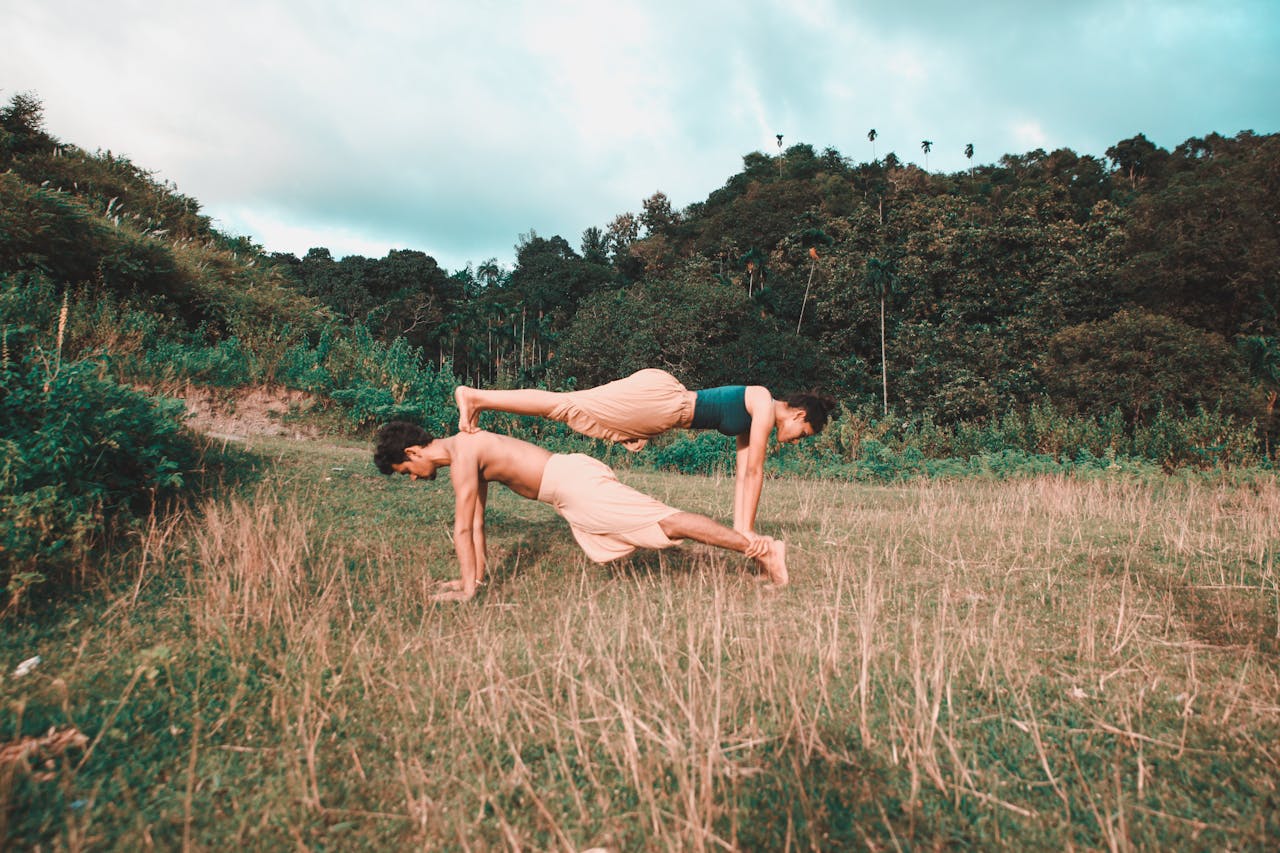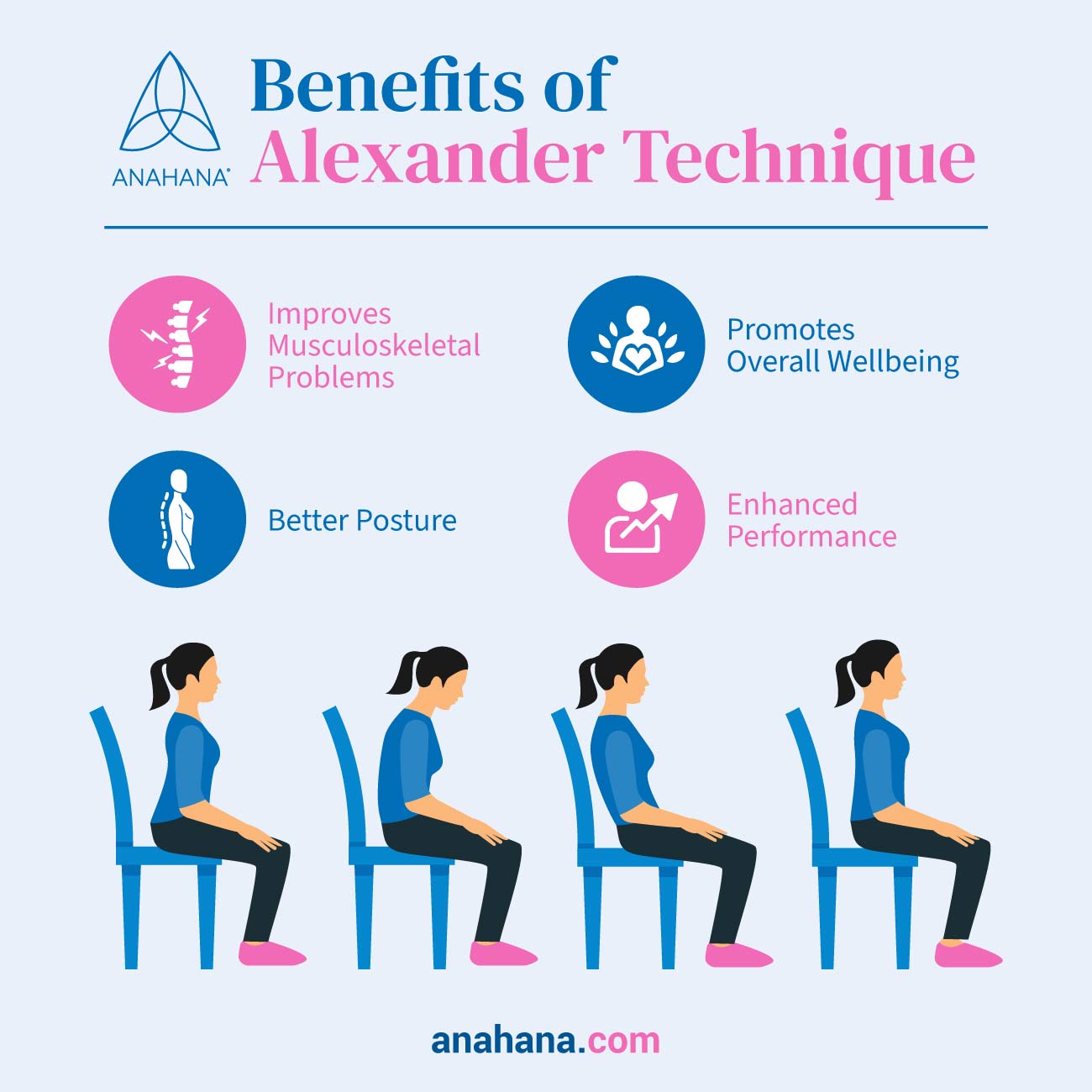
Table of Contents
The Alexander Technique is a method of body work that works by re-establishing natural balance to promote easy upright posture and efficient functioning, body and mind.
What is the Alexander Technique?
The Alexander Technique is an alternative medicine practice designed to help one feel better and move comfortably, in line with the natural way the body should move.
The main principles of the Alexander Technique help one identify bad habits and poor movement patterns that accumulate over a lifetime of stress, allowing one to complete everyday activities with less effort and move more freely.
The Alexander Technique website explains that if one suffers from repetitive strain injuries, is stiff, is uncomfortable sitting for long periods, or is a singer, musician, actor, dancer, or athlete and looking to improve one’s performance, then the Alexander Technique may be beneficial.
Frederick Matthias Alexander
Frederick Matthias Alexander was an Australian actor and author who developed the Alexander Technique as an “educational process that recognizes and overcomes reactive, habitual limitations in movement and thinking.”
Alexander spent a good portion of his early life suffering from illness. When working in dramatic recitals, he began to suffer from hoarseness and, at times, would lose his ability to speak.
The advice from the doctor and voice specialists did not help, so he began self-discovery, using mirrors to examine his speaking habits.
Over time he discovered that when he used “conscious control” of his actions through consciousness by inhibiting incorrect movements instead of trying to do the correct ones, he focused on the means rather than the ends. Through his techniques, his vocal troubles and respiratory problems diminished.
Alexander gained the support of doctors and began promoting his methods, working on many actresses and actors who had lost their voices.
An Alternative Medicine Technique
Though Alexander didn’t initially consider his technique a therapy, it has been adopted and is now considered an alternative medicine. Mainstream medicine now considers it an alternative medicine when used independently.
The American National Center for Complementary and Integrative Health classifies it as a “psychological and physical complementary approach to health when used with mainstream methods.”
American philosopher and educator John Dewey was impressed with the Alexander Technique when it largely cured him of his headaches, neck pains, blurred vision, and stress symptoms. Dewey wrote the introduction to Alexander’s Constructive Conscious Control of the Individual in 1923.
Those in the performing arts have commonly used the Alexander Technique as an alternative treatment to improve both voice and correct poor posture. It even occurred in the curriculum of many prominent Western performing arts institutions in 1995.
Alexander Technique Lessons
The Alexander Technique uses qualified teachers teaching private lessons. Lessons usually occur in a studio, clinic, or the instructors’ house.
During the sessions, which typically last between 30 to 45 minutes, the teacher carefully observes the individual's movements and provides corrections while they demonstrate various ways of moving, sitting, and lying down.
This gentle body adjustment helps establish a healthier connection with the axial skeletal system and facilitates the release of muscular tension.
In training, they teach conscious control over the “five basic directions” that comprise the Alexander Technique’s foundation of coordinated movement:
- Neck be free
- Head forward and up
- Spine lengthen
- Legs away
- Shoulders broaden
Usually, it takes around a minimum of 20 weekly sessions to fully grasp the concepts of the Alexander Technique. An Alexander teacher will highlight that individuals can experience noticeable improvements within a relatively short period after lessons.
However, consistent application of the learned principles is necessary to achieve lasting benefits. This process often takes a considerable amount of time. The primary goal is to help individuals grasp the underlying principles and apply them effectively in everyday activities.
Key Principles
The Alexander Technique improves posture and movement, which helps minimize and prevent other problems caused by poor habits.
During Alexander Technique lessons, one will learn to be more aware of one’s body, increasing one’s kinesthetic awareness, which will help prevent musculoskeletal problems.
Proponents of the Alexander Technique say that the technique works to get rid of tension in the body and works on awareness, feelings, habits, and poise of the whole self, not just the physical self.
He realized that the head was oriented to the body, which created a master reflex that controlled the coordination, tone, and manner of one’s psychophysical being. He calls this master reflex the primary control. The main principles of the method are:
- Daily movement: How one move, sits, and stand impacts how well one functions and manages day-to-day living.
- Optimal functioning: The optimal functioning of one’s body is related to the relationship between one’s head, neck, and spine.
- Mindful posture: Being mindful of how one holds oneself and goes about one’s everyday activities is critical to reaping the technique's benefits and making long-lasting changes.
- Mind and body connection: The mind and body are closely intertwined, constantly influencing each other and working as one unit.
Benefits of the Alexander Technique

There are many benefits to using the Alexander technique, with evidence suggesting many benefits to the whole body and for different health conditions.
Benefits include aiding in musculoskeletal problems, muscle pain, mobility, spine health, balance, posture and movement, performance, and overall well-being.
Musculoskeletal Problems
Musculoskeletal problems often occur after a long period of being too sedentary or moving with bad habits. Addressing musculoskeletal problems with the Alexander Technique is to correct these bad habits and help release muscle tension.
Back and Neck Pain
The Alexander Technique can help reduce chronic low back pain, joint pain, and head and neck pain by recognizing patterns of excess tension.
The technique allows us to recognize and unlearn habitual patterns that will release tension and relieve neck, back, and joint pain in the long term.
Muscle Tension
Stress, too much sitting, and a sedentary lifestyle for a long time can cause continuous muscular tension.
The less strain on the musculoskeletal system, the less likely the muscles will pull the axial system out of line and cause pain. The Alexander Technique works to relieve this muscular tension.
Posture
Poor posture and bad postural habits can adversely affect the whole self. Bad posture can affect balance skills, muscular tension, and joint, neck, and back pain.
The Alexander Technique helps people recognize and unlearn the bad habits that cause tension and interfere with posture and balance.
The Alexander Technique can also help improve posture in less than optimal workstations, such as sitting comfortably at a computer by having a teacher assist in making slight changes in the ergonomics of the work environment.
Performance
The Alexander technique can help different aspects of performance. Benefits from the technique include flexibility, endurance, increased speed and accuracy of responsiveness, performance anxiety, improved vocal projection, and overall voice quality.
Overall Wellbeing
The Alexander Technique allows people to operate with less tension and stress; most people recognize a big difference in their ability to handle stress as the technique teaches one’s own body to respond to a stimulus with less tension.
It also allows one’s body to learn how to breathe properly, which prevents fatigue and calms the nervous system. This effect helps create a clear head space and a sense of natural balance within one’s body.
How to Access Alexander Technique Lessons
- Private sessions: Alexander lessons are typically offered privately. For all lessons and courses, it is important to find a qualified teacher who has the proper experience around body work.
- Healthcare systems: Some healthcare systems lead Alexander Technique lessons through their outpatient clinics or programs. One can also look for other professional organizations that offer the Alexander Technique.
- Professional services: Professional organizations offer courses in the Alexander Technique and Alexander lessons, so it is important to identify that the teacher one selects has completed the requirements to register with the correct organizations and agreed to comply with their code of ethics.
Risks and Limitations
Though there is some evidence that the Alexander Technique has the potential to improve overall health and well-being and certain health conditions, there are certain claims made about the technique that have yet to be scientifically tested or proven.
For most people, the Alexander Technique is safe and generally offers low risks since there is no abrupt manipulation of the body, just gentle touch and adjustments.
Individuals should consult their doctors regarding their specific health conditions and determine whether participating in Alexander Technique lessons would benefit them.
Remember, Alexander Technique teachers are not medical professionals and cannot diagnose, prescribe, or treat any conditions.
References
What Is The Alexander Technique? | HuffPost UK Life
Matthias Alexander - Wikipedia
Alexander Technique - Wikipedia
The Alexander Technique - Thinking Directions.
Disclaimer
The contents of this article are provided for informational purposes only and are not intended to substitute for professional medical advice, diagnosis, or treatment. It is always recommended to consult with a qualified healthcare provider before making any health-related changes or if you have any questions or concerns about your health. Anahana is not liable for any errors, omissions, or consequences that may occur from using the information provided.

By: Clint Johnson
Clint is the driving force and founder of Anahana. Clint teaches Yoga, Pilates, mindful breathing, and meditation, catering to a global community of students and teachers.